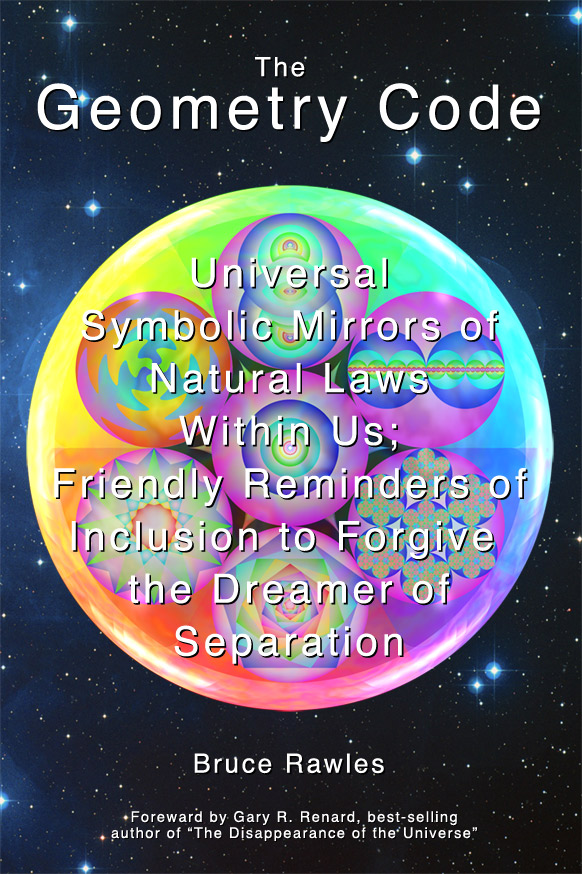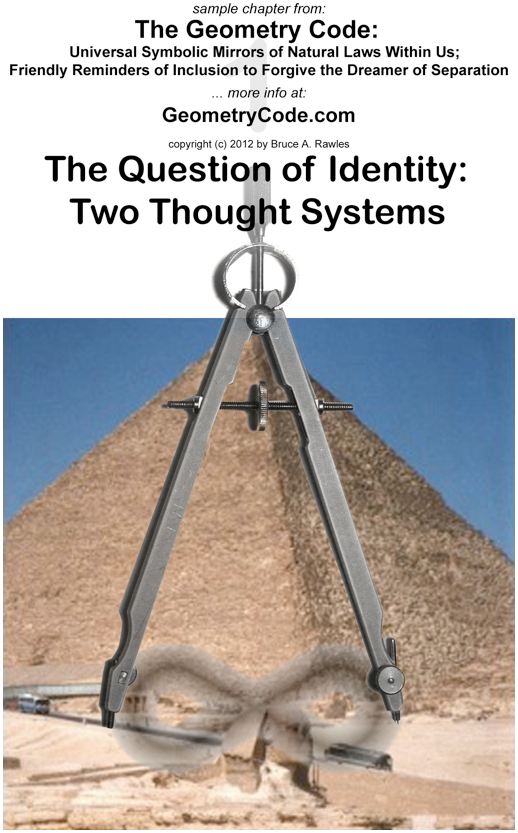Over the years, I’ve been asked by many: “What Makes Sacred Geometry sacred?” to which I usually respond with something like this: Either everything is sacred … or nothing is sacred. While that terse response may seem to be evading the question, I’ve realized more and more deeply that it’s true, and if we gradually (with help from the Inner Inspiration we all can employ) shift our perception from the ephemeral to the eternal then our view of everyone and everything becomes kinder, more compassionate, tolerant and forgiving of the minutiae of the fleeting phantasms of form and the cosmically temporary. If truth doesn’t change, our task must be to seek and find what is true and cannot change; the laws of mathematics and geometry seem worthy candidates for possible means of finding the unalterably true. However, for something to be unequivocally true, it must apply to everyone and everything. The discipline of the scientific mind requires that we keep looking if we find exceptions to our postulates and theorems and persist until we find the safety, security, and serenity of what can never change. William Shakespeare penned lovely prose about the ideal of looking ever inward to the mind for what doesn’t alter or change when it (the mind) finds the alterable:
Sonnet 116: Let me not to the marriage of true minds
BY WILLIAM SHAKESPEARE
Let me not to the marriage of true minds
Admit impediments. Love is not love
Which alters when it alteration finds,
Or bends with the remover to remove.
O no! it is an ever-fixed mark
That looks on tempests and is never shaken;
It is the star to every wand’ring bark,
Whose worth’s unknown, although his height be taken.
Love’s not Time’s fool, though rosy lips and cheeks
Within his bending sickle’s compass come;
Love alters not with his brief hours and weeks,
But bears it out even to the edge of doom.
If this be error and upon me prov’d,
I never writ, nor no man ever lov’d.
Seeking what is true for all, we realize we are all in the “same boat” either expressing kindness or in one way or another asking for it. Seen from this perspective, our true kinship – our real relationship – to everyone and everything merits kindness in response to expressions or requests for the same. That seems like a very serviceable and practical definition of sacredness – generalized to encompass all, sacredness reflects the perfection beyond the forms our senses and the mind’s machinery of interpretation seem to establish as real. We rarely question the vast number of assumptions we make every second about the world that seems vulgar and profane or at the very least disappointing in its impermanence.
A few dictionary definitions of the word sacred (most closely aligned with how I think of the word) are “revered, inviolable, inviolate, unimpeachable, invulnerable, untouchable, inalienable, protected, defended, secure, safe, and unthreatened.” These adjectives would suggest that nothing in this material world – where every form that appears eventually disappears – would qualify for sacredness; no exemption for the changed, changing, and changeable from decay, dissolution, and death. Yet while the laws of physics (particularly the Second Law of Thermodynamics) would suggest that nothing in spacetime is forever, we certainly can use our experiences in the world of space and time to guide us (even if largely as counterexamples) to find what is endless.
Our experience of sacredness – which I would equate with the purely innocent eternal nature of our being and all that remains in mind after we have completely forgiven ourselves and everyone for everything – depends completely on the thought system with which one views everything! If we look for what unites us, what is intrinsically the same for all – regardless of all the polarizing temporary attributes that seem to define our ephemeral personas and certainly our bodies – we find the sacred, innocent undifferentiated awareness from which all creation derives and to which we all belong.
What prompted this metaphysical musing? My computer calendar showed me that a decade ago today, I published my second book in print form, followed by a Kindle edition a few months later. I was also reflecting fondly on some related anniversaries:
- 10 years ago today, The Geometry Code: Universal Symbolic Mirrors of Natural Laws Within Us; Friendly Reminders of Inclusion to Forgive the Dreamer of Separation became available in print
- 15 years ago (2007), I “rediscovered” the pure non-dual metaphysics of A Course In Miracles by way of Gary Renard‘s first book: The Disappearance of the Universe: Straight Talk about Illusions, Past Lives, Religion, Sex, Politics, and the Miracles of Forgiveness and shortly thereafter started ACIMblog.com and started a weekly study group (now online)
- 25 years ago (1997) I launched my first book, Sacred Geometry Design Sourcebook – Universal Dimensional Patterns
- 30 years ago (1992), having “rediscovered” what has become known as sacred geometry via fellow mystical explorer and contemporary, Gregg Braden at a lecture in my mother’s living room in Livermore, California a year before – we (my now wife, Nancy, and I) accompanied Gregg (21 of us) to Egypt to explore the Great Pyramid of Giza and numerous sites up and down the Nile River
- 50 years ago (1972) I graduated from Livermore High School
Thanks to all of you for many decades of support, collaboration, and shared enthusiasm for finding what is true! Here are some excerpts from the June 2012 bulletin that provide details about my second book, which combined interests in both sacred geometry and non-dual metaphysics. The book “The Geometry Code: Universal Symbolic Mirrors of Natural Laws Within Us; Friendly Reminders of Inclusion to Forgive the Dreamer of Separation became available 10 years ago today: on June 5, 2012.

About the book: The Geometry Code
While I was completing work on Sacred Geometry Design Sourcebook, (completed in 1997), I was already working on another book, which was ready on June 5th, 2012. Rather than reinvent the wheel, I think the Preface I wrote explains how the book came about and gives a good “big picture” of what it is about. I’ve uploaded the Table of Contents, Endorsements from friends and colleagues, Acknowledgments, a sample chapter, and more.
